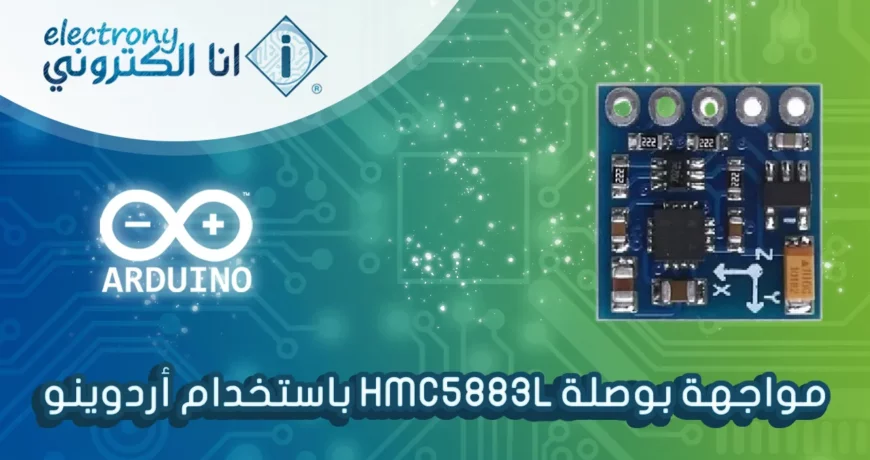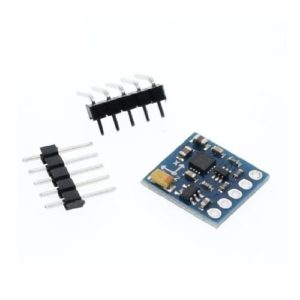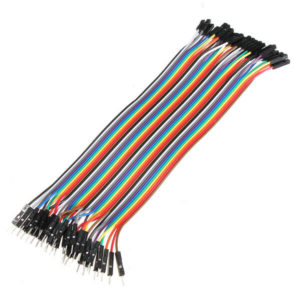/*****************************************************************************/
// Function: Get the Geographic direction of the X-axis.
// If X-axis points to the North, it is 0 degree.
// If X-axis points to the East, it is 90 degrees.
// If X-axis points to the South, it is 180 degrees.
// If X-axis points to the West, it is 270 degrees.
// Hardware: Grove – 3-Axis Digital Compass
//
// This library is free software; you can redistribute it and/or
// modify it under the terms of the GNU Lesser General Public
// License as published by the Free Software Foundation; either
// version 2.1 of the License, or (at your option) any later version.
//
// This library is distributed in the hope that it will be useful,
// but WITHOUT ANY WARRANTY; without even the implied warranty of
// MERCHANTABILITY or FITNESS FOR A PARTICULAR PURPOSE. See the GNU
// Lesser General Public License for more details.
//
// You should have received a copy of the GNU Lesser General Public
// License along with this library; if not, write to the Free Software
// Foundation, Inc., 51 Franklin St, Fifth Floor, Boston, MA 02110-1301 USA
//
/*******************************************************************************/
// Reference the I2C Library
#include <Wire.h>
// Reference the HMC5883L Compass Library
#include <HMC5883L.h>
//#include “Streaming.h”
// Store our compass as a variable.
HMC5883L compass;
// Record any errors that may occur in the compass.
int error = 0;
MagnetometerScaled valueOffset;
// Out setup routine, here we will configure the microcontroller and compass.
void setup()
{
// Initialize the serial port.
Serial.begin(115200);
delay(2000);
Serial.println(“Starting the I2C interface.”);
Wire.begin(); // Start the I2C interface.
Serial.println(“Constructing new HMC5883L”);
Serial.println(“Setting scale to +/- 1.3 Ga”);
error = compass.setScale(1.3); // Set the scale of the compass.
if(error != 0) // If there is an error, print it out.
Serial.println(compass.getErrorText(error));
Serial.println(“Setting measurement mode to continous.”);
error = compass.setMeasurementMode(MEASUREMENT_CONTINUOUS); // Set the measurement mode to Continuous
if(error != 0) // If there is an error, print it out.
Serial.println(compass.getErrorText(error));
compassCalibrate();
}
// calibrate offset of x, y and z
void compassCalibrate(void)
{
//Serial << “>>>> calibrate the compass\n”;
Serial.println(“calibrate the compass”);
MagnetometerScaled valueMax = {0, 0, 0};
MagnetometerScaled valueMin = {0, 0, 0};
// calculate x, y and z offset
//Serial << “please rotate the compass” << endl;
Serial.println(“please rotate the compass”);
int xcount = 0;
int ycount = 0;
int zcount = 0;
boolean xZero = false;
boolean yZero = false;
boolean zZero = false;
MagnetometerScaled value;
while (xcount < 3 || ycount < 3 || zcount < 3) {
value = compass.readScaledAxis();
if ((fabs(value.XAxis) > 600) || (fabs(value.YAxis) > 600) || (fabs(value.ZAxis) > 600)) {
continue;
}
if (valueMin.XAxis > value.XAxis) {
valueMin.XAxis = value.XAxis;
} else if (valueMax.XAxis < value.XAxis) {
valueMax.XAxis = value.XAxis;
}
if (valueMin.YAxis > value.YAxis) {
valueMin.YAxis = value.YAxis;
} else if (valueMax.YAxis < value.YAxis) {
valueMax.YAxis = value.YAxis;
}
if (valueMin.ZAxis > value.ZAxis) {
valueMin.ZAxis = value.ZAxis;
} else if (valueMax.ZAxis < value.ZAxis) {
valueMax.ZAxis = value.ZAxis;
}
if (xZero) {
if (fabs(value.XAxis) > 50) {
xZero = false;
xcount++;
}
} else {
if (fabs(value.XAxis) < 40) {
xZero = true;
}
}
if (yZero) {
if (fabs(value.YAxis) > 50) {
yZero = false;
ycount++;
}
} else {
if (fabs(value.YAxis) < 40) {
yZero = true;
}
}
if (zZero) {
if (fabs(value.ZAxis) > 50) {
zZero = false;
zcount++;
}
} else {
if (fabs(value.ZAxis) < 40) {
zZero = true;
}
}
delay(30);
}
valueOffset.XAxis = (valueMax.XAxis + valueMin.XAxis) / 2;
valueOffset.YAxis = (valueMax.YAxis + valueMin.YAxis) / 2;
valueOffset.ZAxis = (valueMax.ZAxis + valueMin.ZAxis) / 2;
#if 0
Serial << “max: ” << valueMax.XAxis << ‘\t’ << valueMax.YAxis << ‘\t’ << valueMax.ZAxis << endl;
Serial << “min: ” << valueMin.XAxis << ‘\t’ << valueMin.YAxis << ‘\t’ << valueMin.ZAxis << endl;
Serial << “offset: ” << valueOffset.XAxis << ‘\t’ << valueOffset.YAxis << ‘\t’ << valueOffset.ZAxis << endl;
Serial << “<<<<” << endl;
#endif
Serial.print(“max: “);
Serial.print(valueMax.XAxis);
Serial.print(valueMax.YAxis);
Serial.println(valueMax.ZAxis);
Serial.print(“min: “);
Serial.print(valueMin.XAxis);
Serial.print(valueMin.YAxis);
Serial.println(valueMin.ZAxis);
Serial.print(“offset: “);
Serial.print(valueOffset.XAxis);
Serial.print(valueOffset.YAxis);
Serial.println(valueOffset.ZAxis);
}
// Our main program loop.
void loop()
{
// Retrive the raw values from the compass (not scaled).
MagnetometerRaw raw = compass.readRawAxis();
// Retrived the scaled values from the compass (scaled to the configured scale).
MagnetometerScaled scaled = compass.readScaledAxis();
scaled.XAxis -= valueOffset.XAxis;
scaled.YAxis -= valueOffset.YAxis;
scaled.ZAxis -= valueOffset.ZAxis;
// Values are accessed like so:
int MilliGauss_OnThe_XAxis = scaled.XAxis;// (or YAxis, or ZAxis)
// Calculate heading when the magnetometer is level, then correct for signs of axis.
float yxHeading = atan2(scaled.YAxis, scaled.XAxis);
float zxHeading = atan2(scaled.ZAxis, scaled.XAxis);
float heading = yxHeading;
// Once you have your heading, you must then add your ‘Declination Angle’, which is the ‘Error’ of the magnetic field in your location.
// Find yours here: http://www.magnetic-declination.com/
// Mine is: -2��37′ which is -2.617 Degrees, or (which we need) -0.0456752665 radians, I will use -0.0457
// If you cannot find your Declination, comment out these two lines, your compass will be slightly off.
float declinationAngle = -0.0457;
heading += declinationAngle;
// Correct for when signs are reversed.
if(heading < 0)
heading += 2*PI;
// Check for wrap due to addition of declination.
if(heading > 2*PI)
heading -= 2*PI;
// Convert radians to degrees for readability.
float headingDegrees = heading * 180/M_PI;
float yxHeadingDegrees = yxHeading * 180 / M_PI;
float zxHeadingDegrees = zxHeading * 180 / M_PI;
// Output the data via the serial port.
// Output(raw, scaled, heading, headingDegrees);
// Serial << scaled.XAxis << ‘ ‘ << scaled.YAxis << ‘ ‘ << scaled.ZAxis << endl;
// Serial << “arctan y/x: ” << yxHeadingDegrees << ” \tarctan z/x: ” << zxHeadingDegrees << endl;
Serial.print(scaled.XAxis);
Serial.print(scaled.YAxis);
Serial.println(scaled.ZAxis);
Serial.print(“arctan y/x: “);
Serial.print(yxHeadingDegrees);
Serial.print(“arctan z/x: “);
Serial.print(zxHeadingDegrees);
// Normally we would delay the application by 66ms to allow the loop
// to run at 15Hz (default bandwidth for the HMC5883L).
// However since we have a long serial out (104ms at 9600) we will let
// it run at its natural speed.
delay(1000);//of course it can be delayed longer.
}
// Output the data down the serial port.
void Output(MagnetometerRaw raw, MagnetometerScaled scaled, float heading, float headingDegrees)
{
Serial.print(“Raw:\t”);
Serial.print(raw.XAxis);
Serial.print(” “);
Serial.print(raw.YAxis);
Serial.print(” “);
Serial.print(raw.ZAxis);
Serial.print(” \tScaled:\t”);
Serial.print(scaled.XAxis);
Serial.print(” “);
Serial.print(scaled.YAxis);
Serial.print(” “);
Serial.print(scaled.ZAxis);
Serial.print(” \tHeading:\t”);
Serial.print(heading);
Serial.print(” Radians \t”);
Serial.print(headingDegrees);
Serial.println(” Degrees \t”);
}








